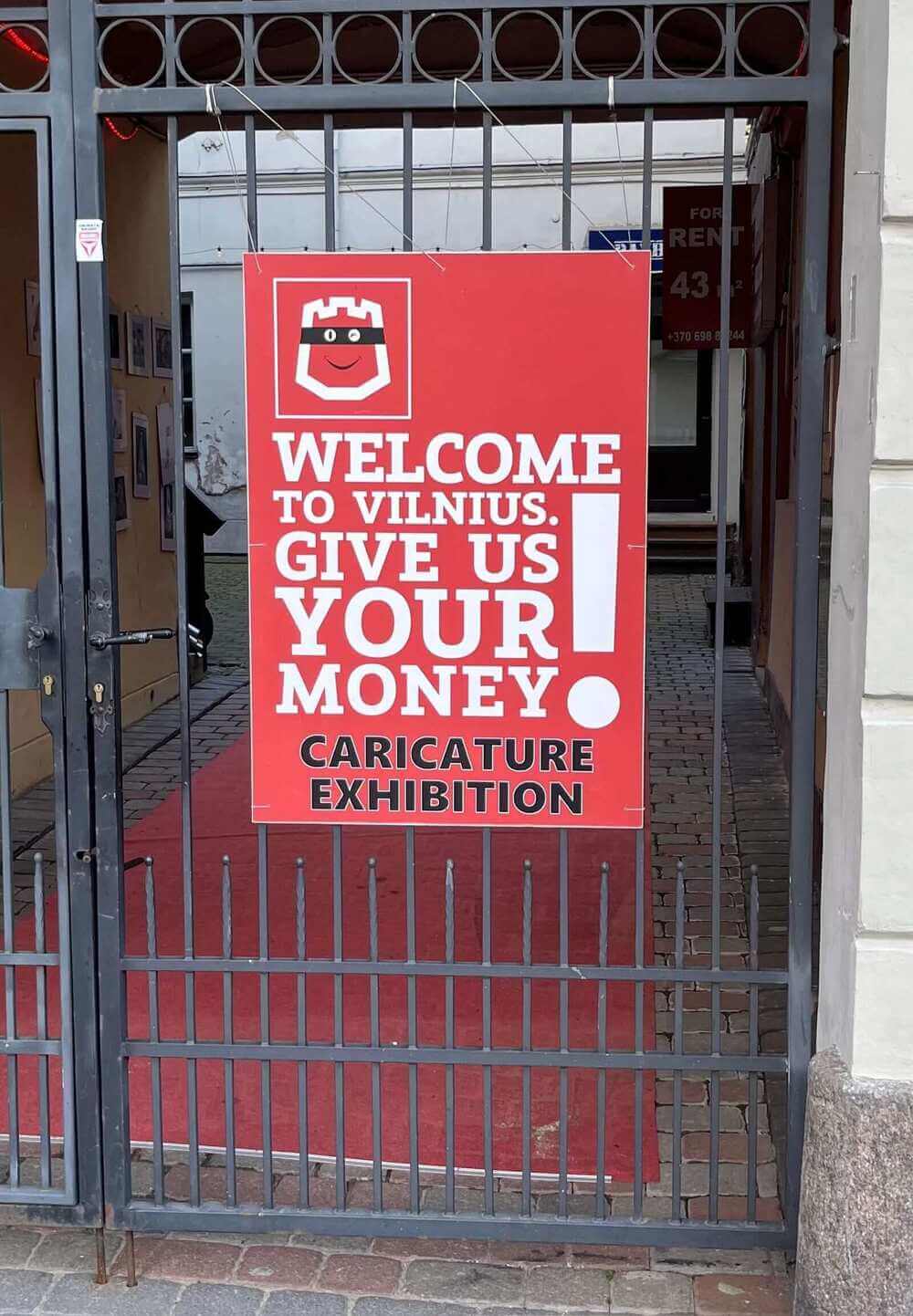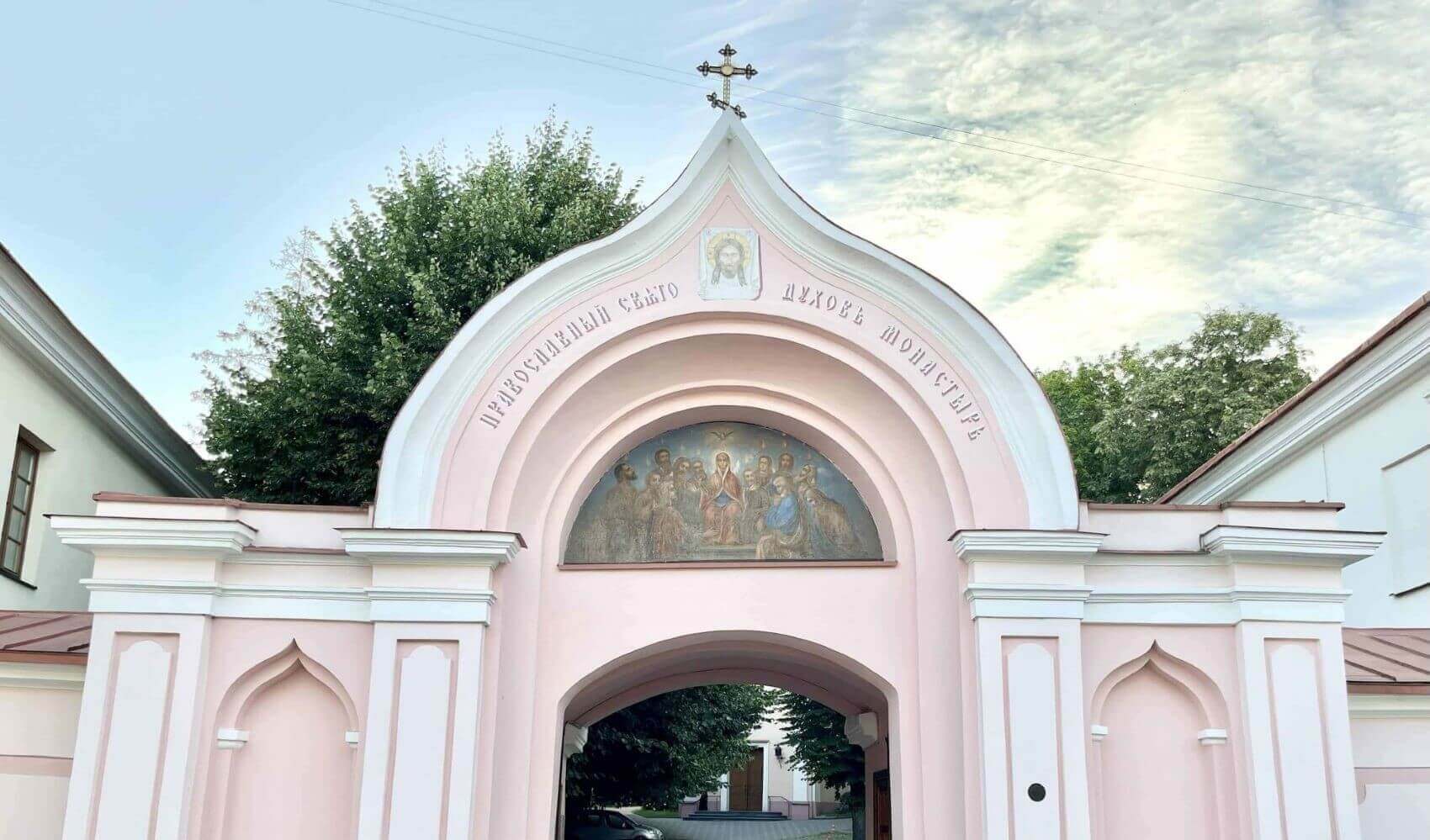
I visited Lithuania with my college friend Rafael Tafur in August 2022 as part of our Poland-Finland bus trip via the Baltic countries. Although the train or the plane would have been faster, we realized that taking an 8-hour night bus from Warsaw would not only be cheaper, but also save us a night of accommodation. Lithuanian is one of the most conservative languages in Europe – meaning that is has not changed much over the centuries and resembles its Proto-Indo-European origins more than other modern-day languages. I expected that our interactions with people would therefore be characterized by caveman-like grunting, but it turns out it is quite a pleasant language to listen to, suggesting that our ancestral cavepeople were perhaps more melodic and eloquent than I thought.
Although Vilnius is the 2nd largest city in the Baltic countries, it felt very small. We managed to walk around its old town and visit all the spots we wanted to see within a 2-hour period. It was a very quiet city, although I imagine that the newer Snipiskes district that lies in the north of the city and that we did not see might be more vibrant. The city gets its name from the river Vilnia, which flows through the town into the Neris river and into the Baltic Sea. I found Vilnius to be rather quiet and humble – it was not full of flashy tourist attractions, but rather was a pleasant and serene place to walk around. I appreciated its greenery, especially strolling along the riverside, which was a soothing experience – unusual in an urban environment.
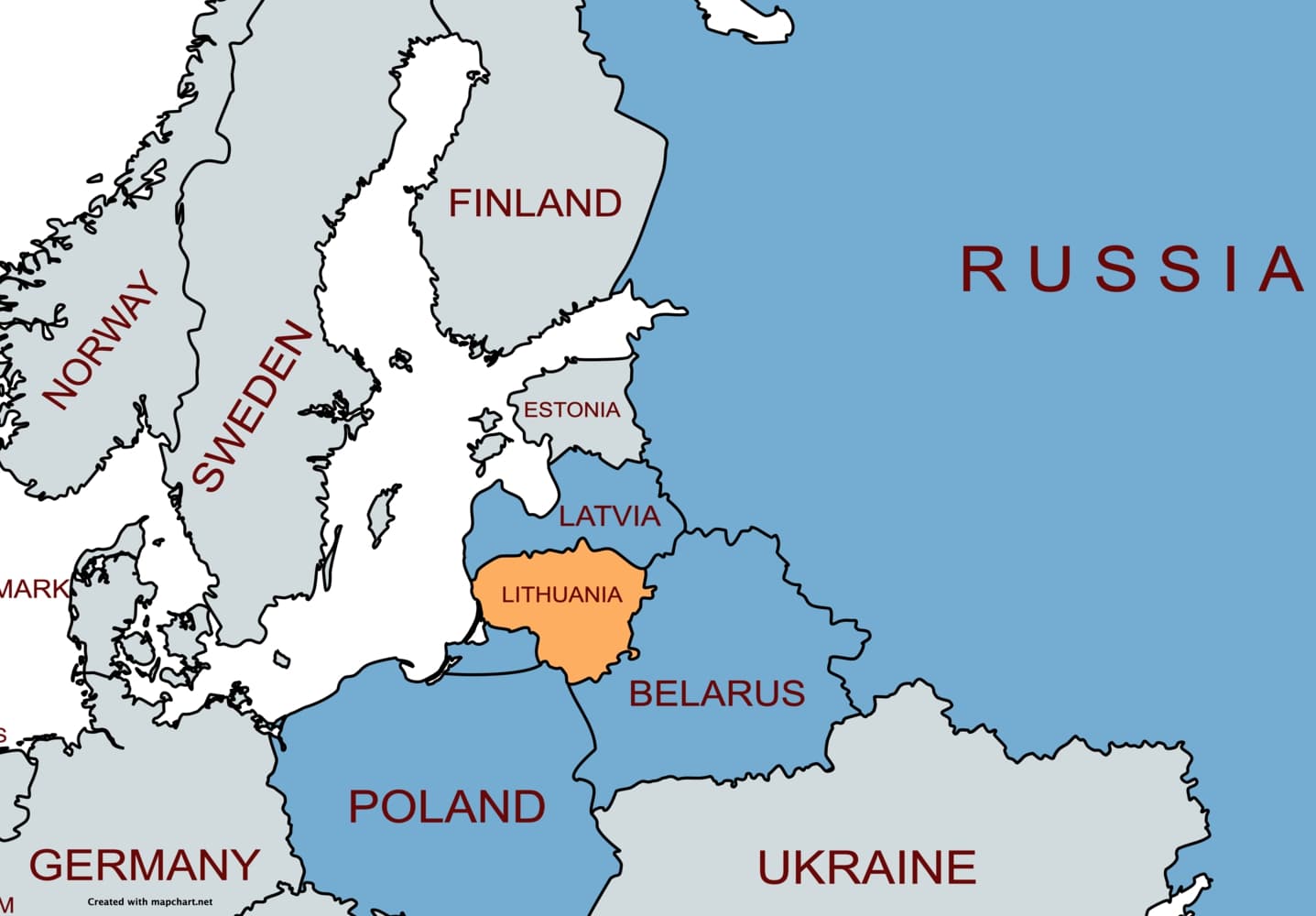
Although it is a very small country today, the Grand Duchy of Lithuania was once the largest nation in Europe. From the 13th to 16th centuries, its territory included much of the former Kievan Rus, including much of modern-day Belarus, Ukraine, Moldova, and Latvia, and parts of Russia and Poland. It united with Poland in the Poland-Lithuanian Commonwealth from 1569-1795. With the dissolution of the Commonwealth, Lithuania was taken over by the Russian Empire. It remained under Russian occupation until the end of World War I. From 1918-1920, a three-way fight broke out between Lithuania, Poland, and the USSR, all of which wanted to control Vilnius. Ultimately Poland prevailed, and the new Lithuanian state would be created without its most important city.
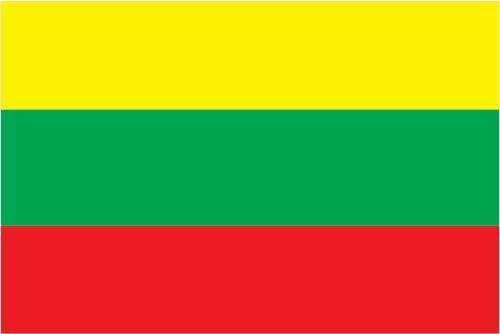
The USSR invaded Poland in 1939 and signed a mutual defence treaty with Lithuania. Once it captured Vilnius from Poland, it gave the city to Lithuania, who was elated and loved its neighbour with all its heart and soul. Until the following year when the USSR annexed all of Lithuania. The nation would swap hands again the following year in 1941 when Nazi Germany invaded the USSR. During the German occupation of Lithuania, 95% of Lithuania’s Jewish population was exterminated. The USSR pushed the Germans back in 1944, and Lithuania remained part of the Soviet Union throughout the Cold War. In 1990, the Lithuanian Soviet Socialist Republic declared its independence from the USSR, and over the coming decades sought to integrate itself in the European Union, NATO, and the Eurozone. Despite their previous conflict, Poland and Lithuania now are close allies within these institutions.
Clearly visible in Vilnius’ main square are the Vilnius Cathedral and its bell tower. Our first impression of the square was that it was quiet and desolate – not surprising for early on a Monday morning in August. However, at night the area livened up quite a bit. I noticed that within the city limits the architecture was much more ornate than outside, where Soviet-style concrete apartment blocks were clustered.
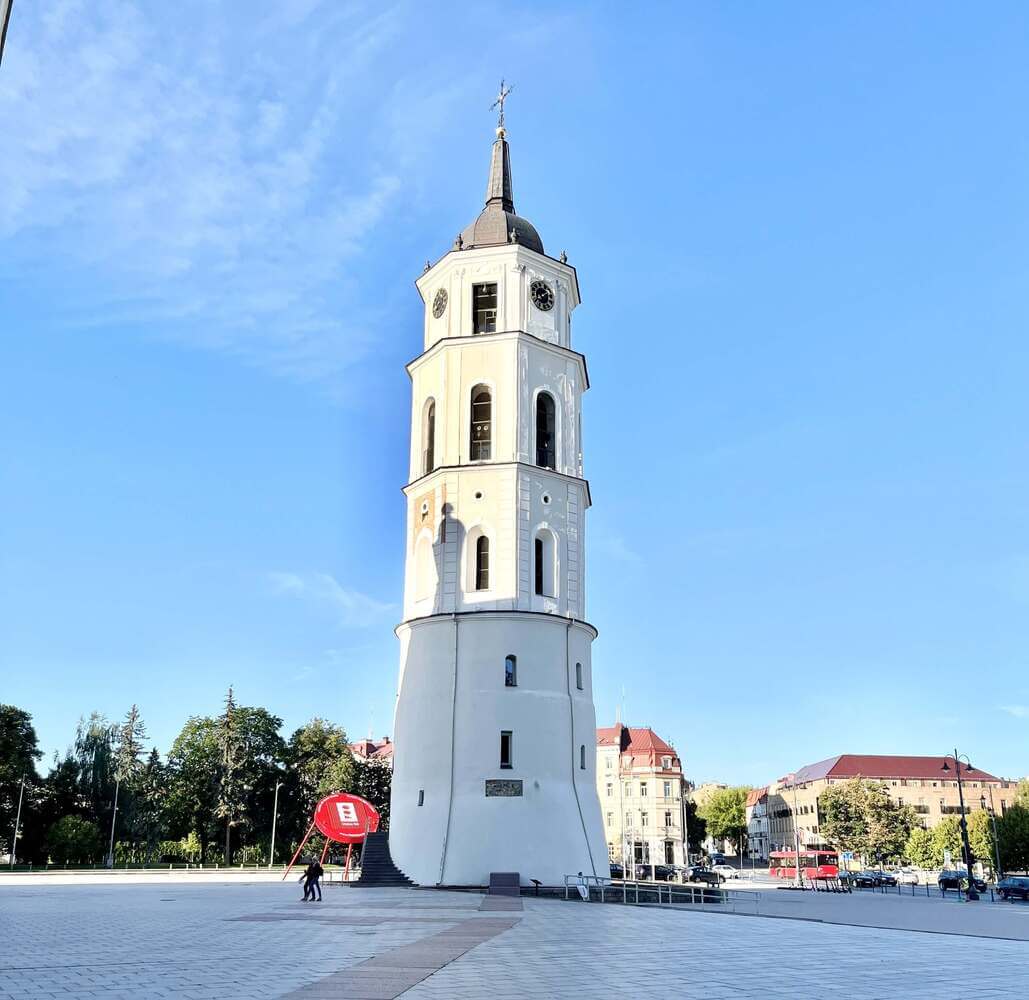
Although Gediminas’ hill seems rather small, it boasts an impressive history. A wooden castle was built here in the 10th century, and under the rule of Grand Duke Gediminas, it was converted into stone in the early 1300s. The castle was damaged during several intense sieges at the end of that century, and it slowly fell into disrepair over the following centuries. It was captured by Russia during their invasion in 1655. Gediminas’ Tower was rebuilt in 1933 and is now all that is left of the castle. It has become a symbol of Lithuania. After all of my mountain adventures, I found this hill and tower underwhelming. However, given that Lithuania is a very flat country, with a high point of under 300 meters, this is probably the best defensive position one can find in the region.
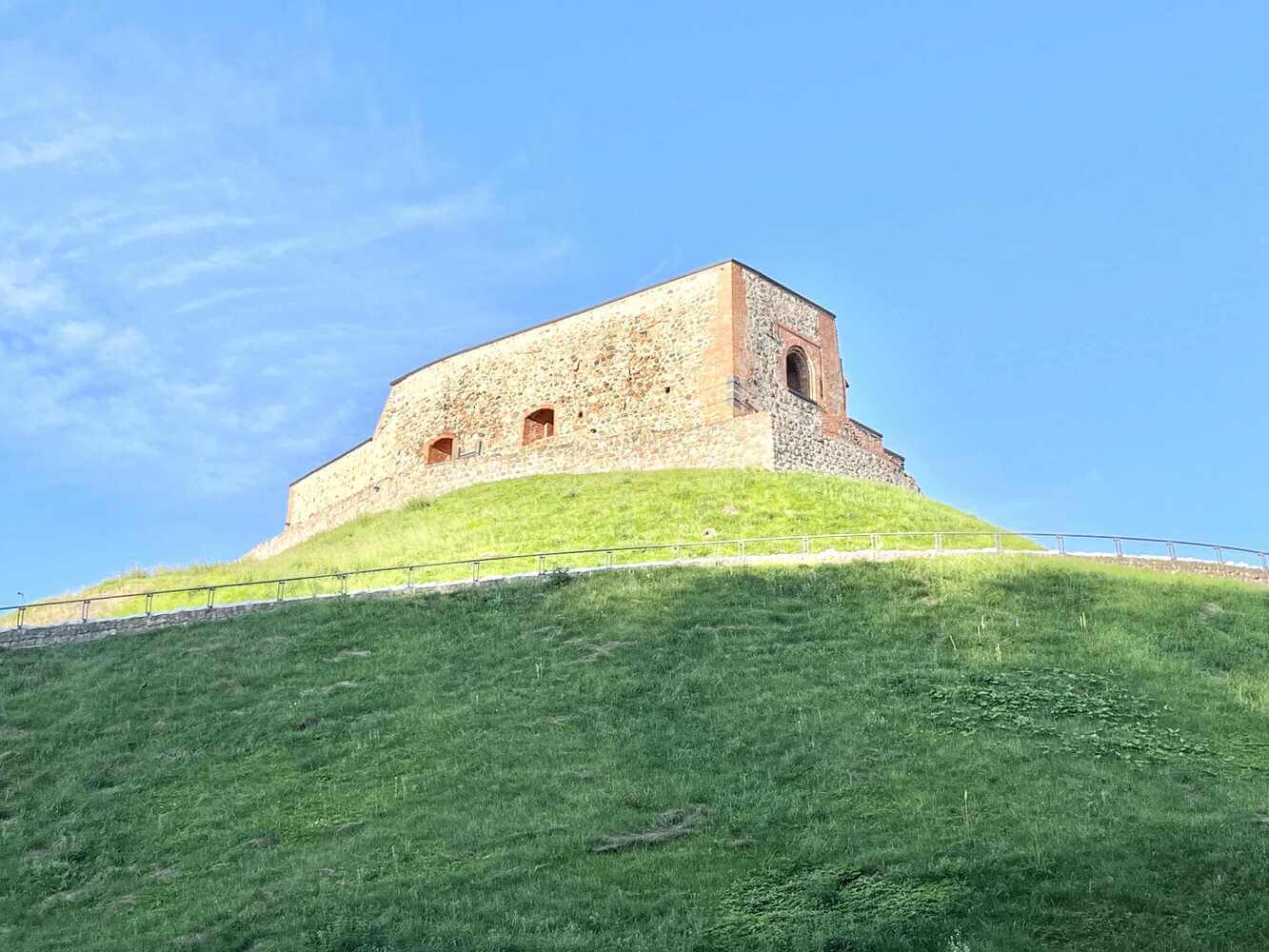
Welcome to Vilnius. Give us your Money! is a poster we chanced across as we first entered the old town. In my travels, I have found that people across the world devise increasingly creative ways to extract money from tourists, ranging from petting weird desert animals (Tunisia) to selling toilet paper rolls with Vladimir Putin’s head on it (Poland). This was the first time someone was so explicit about it, and the honesty was refreshing. Although it was closed at the time, I later learned that this was part of the Vilnius Caricature Exhibition that tackled the very relevant issue of tourist extortion. It was both thought-provoking and chuckle-inducing, and I appreciated the wit.
